Whidbey Weavers School: Day Two
- Posted on: 2021-05-17
- |
- Views: 4114
- |
- Category:
- ▸ Weaving
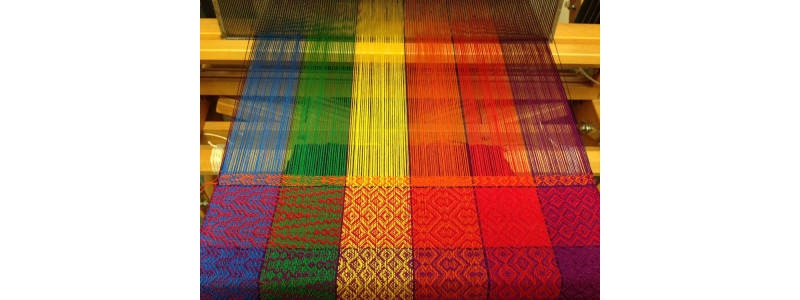
***Originally published on August 20, 2015***
Today
we began collaboratively warping one loom, something we’ll be doing in
stages, each of us taking a turn at another part of it, while in the
meantime getting to rotate around between more and more of the sample
projects on the looms and weaving different types of patterns.
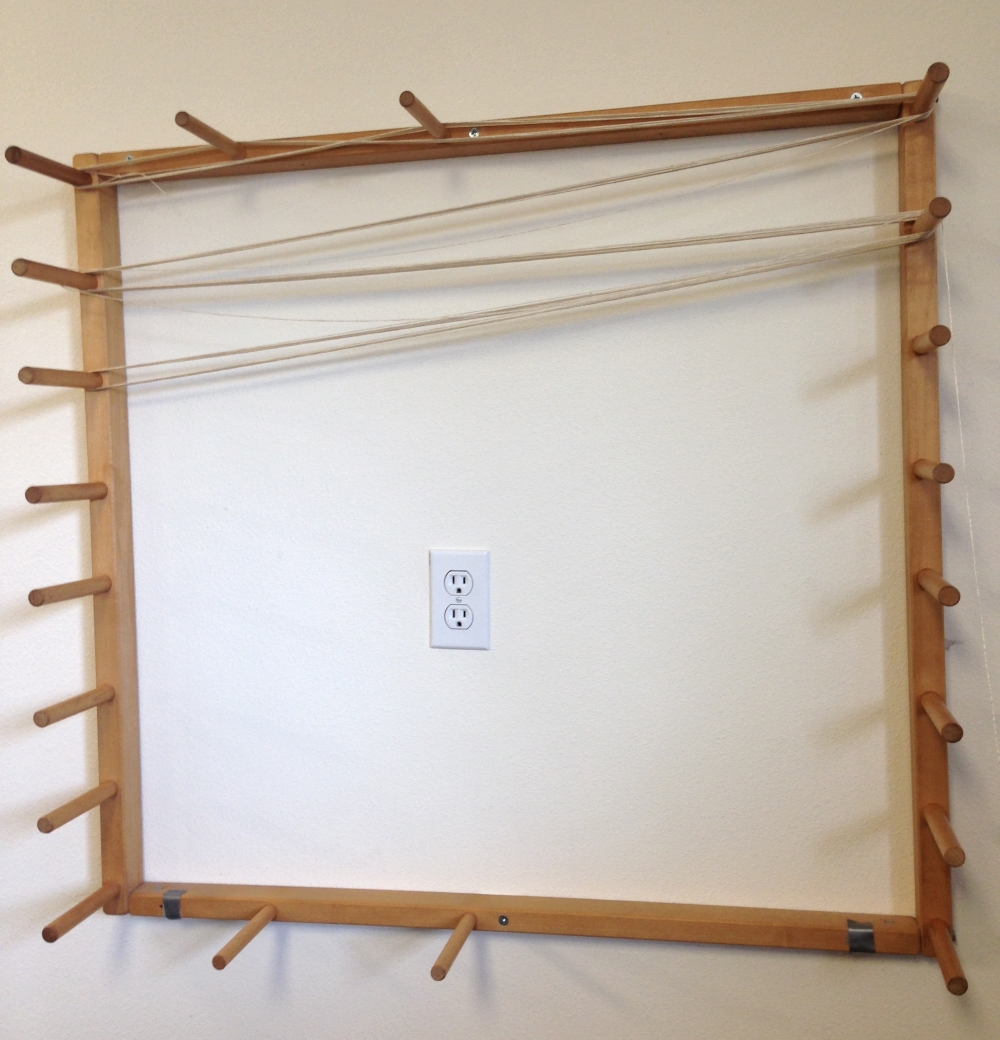
Learning how to use a warping board to measure the yardage we’ll need for the warp

The
fact that it will take us the better part of a week, all 15 of us
collaboratively warping a loom together, seems to be a pretty good
indication of how time-consuming and meticulous this process is!
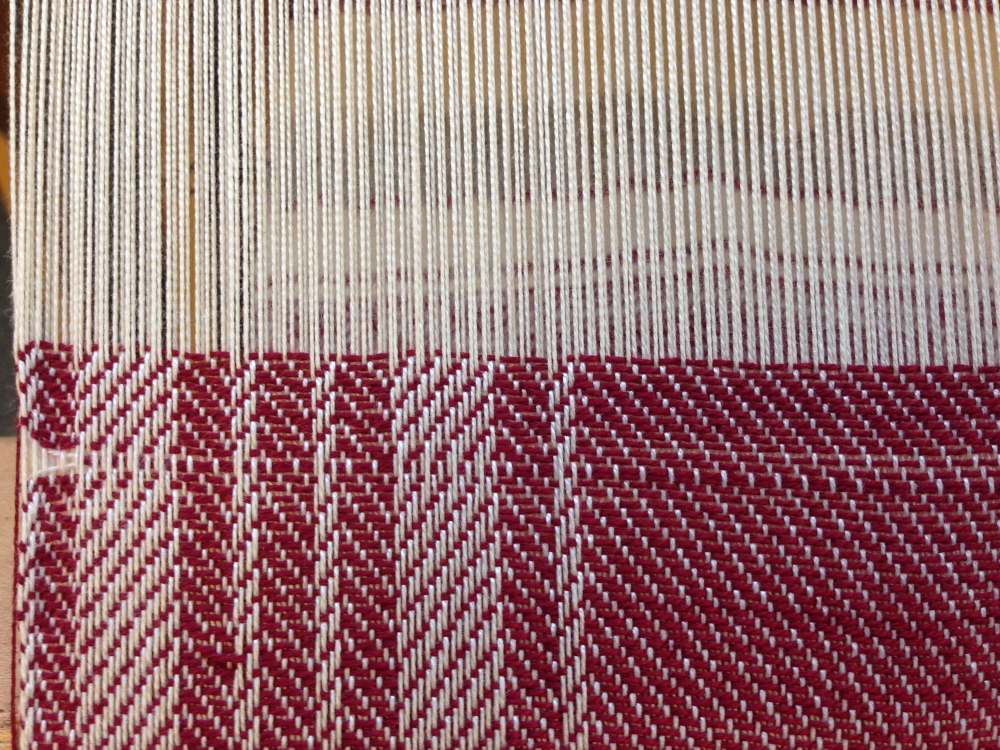
In my own weaving news, I started off my day by finishing the red twill sample I’d started the previous afternoon.
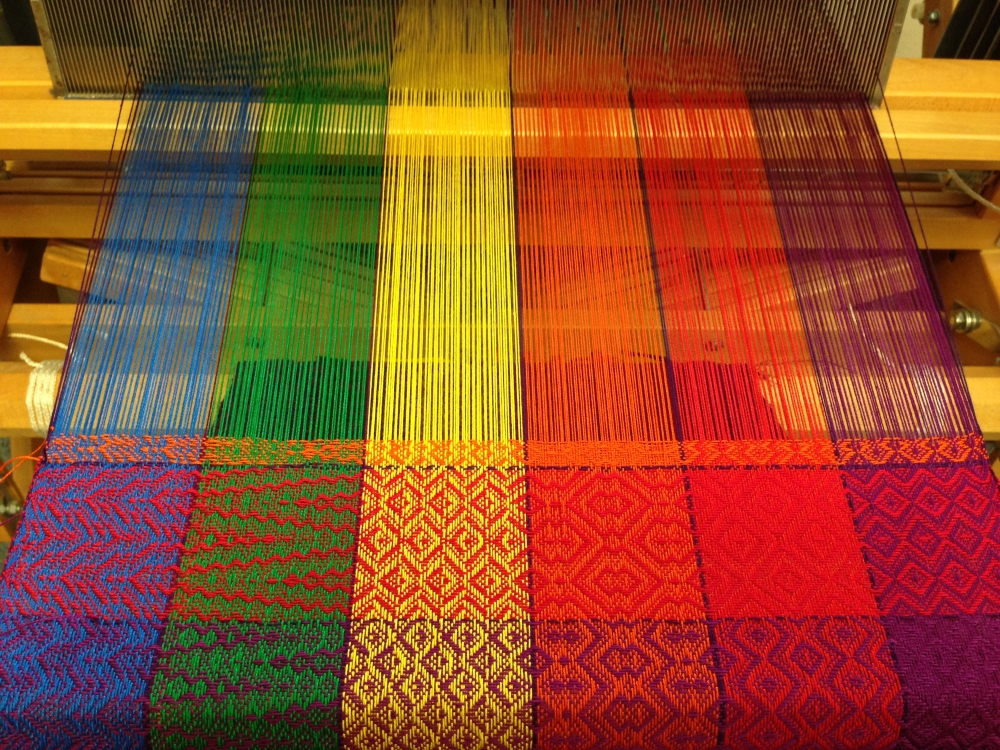
The
twill projects do remind me of knitting a little bit: have you ever
done a pattern that displayed diagonal lines like this? It’s
essentially the same concept — doing whatever it is that makes the
pattern, like a yarn-over, or knitting with a different color, in the
exact same iteration for each row, but nudging the iteration over one
stitch with every advancing row.
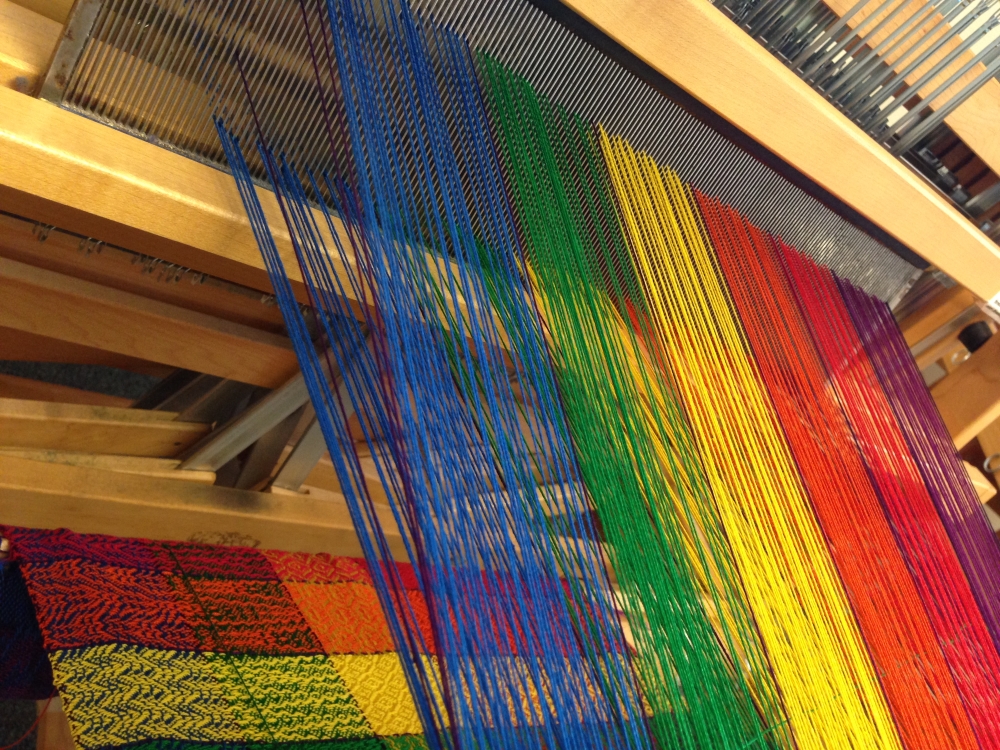
Then, I got to try out some color gamp!
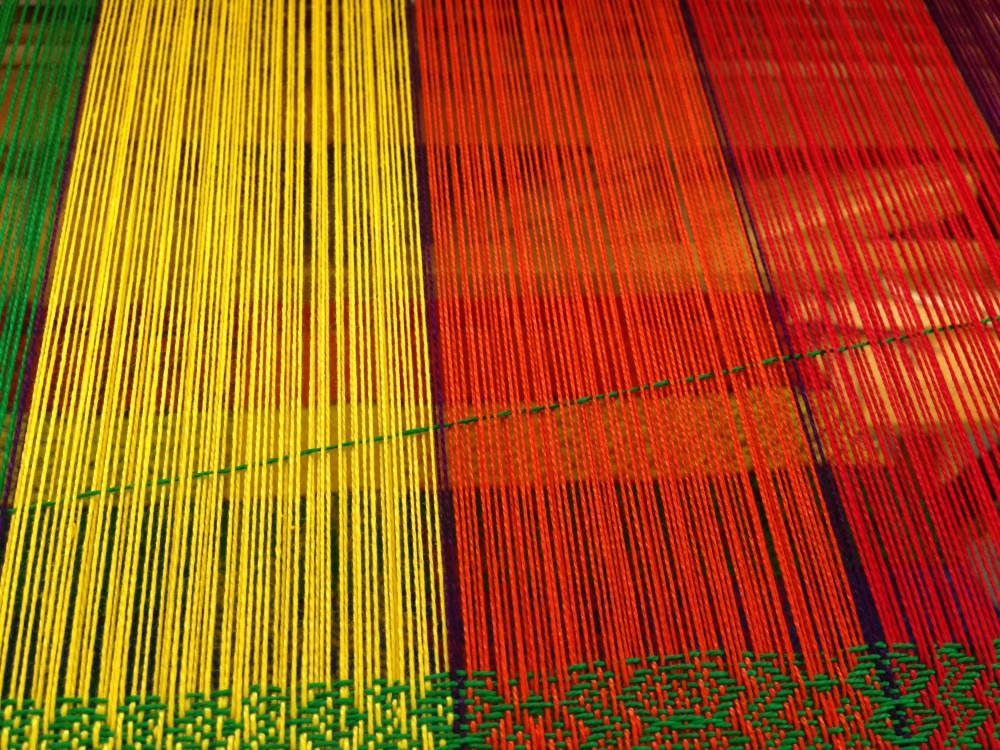
I
really love looking at the ones that are warped with all sorts of
different colors from this side angle, where you can see both layers of
the warp yarn when the shafts are open.
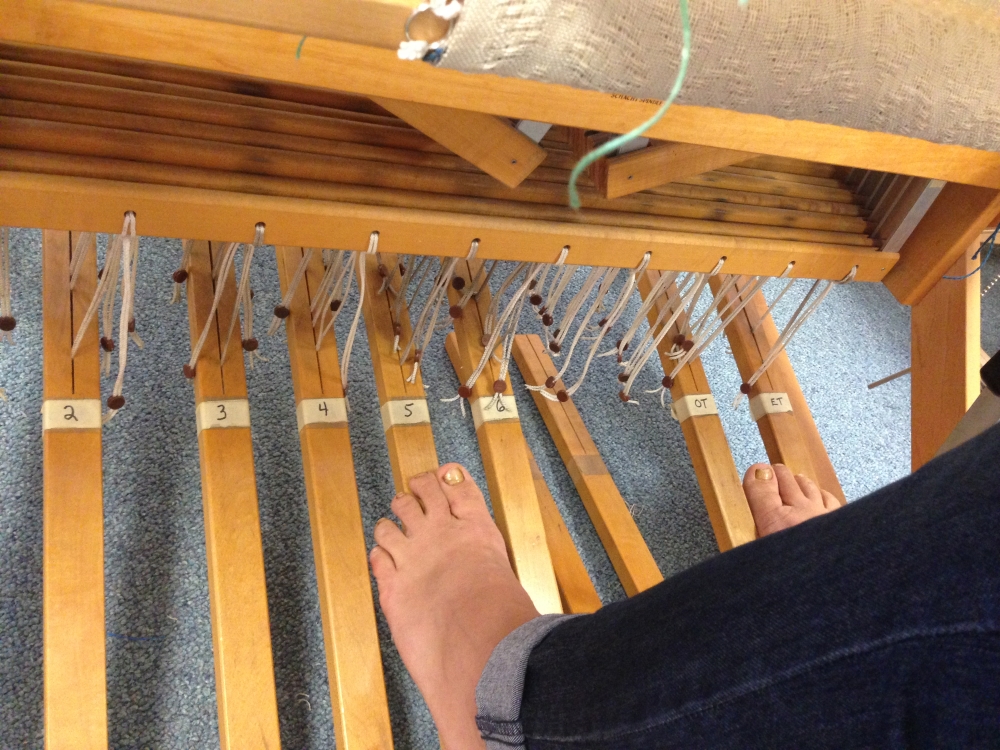
It
does remind me of sitting down at a piano bench, getting comfortable,
and using your feet to find the right pedals (treadles!). Here I’m
working on a plain white lace pattern, and because there’s only one
color and one shuttle to throw, all the work is in the feet. The rhythm
(“E1E1E, O2O2O…”) becomes automatic after just a few repeats, and
combined with the handwork of moving the shuttle from left to right, I
felt like I was sitting there playing an organ…but lace was coming out
instead of music!
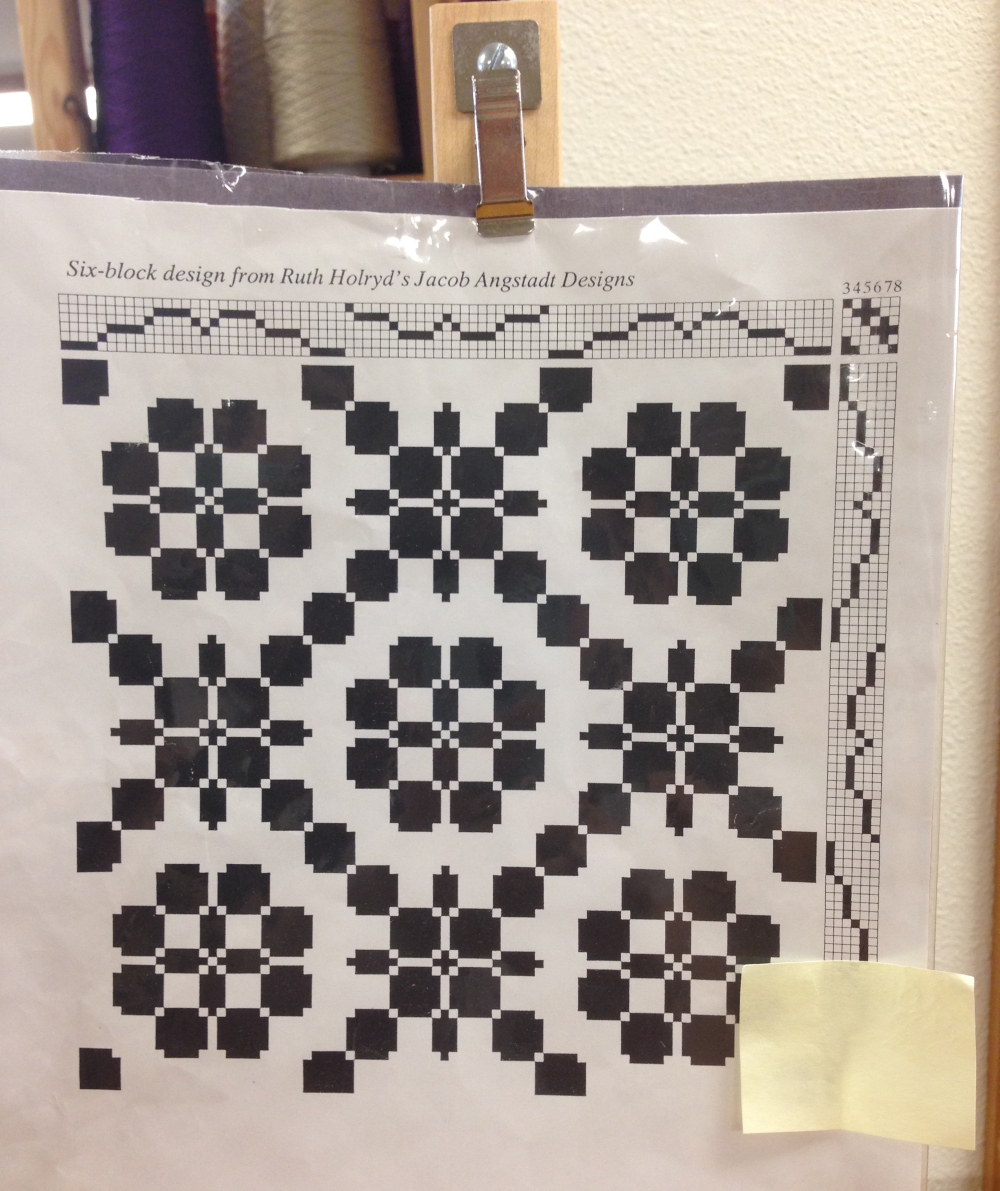
This
also shows how weaving reminds me of Tetris just a little bit. Madelyn
told us to always throw the shuttle so that the yarn is at an angle,
like this. That way there’s enough slack in the yarn for it to stay
smooth and even once it’s pushed down and compressed against the
previous rows. Here, you can really see how the green yarn is running
over and under the different warp yarns, in an order that is seemingly
chaotic, but that will meld with the previous rows to form a purposeful
design.
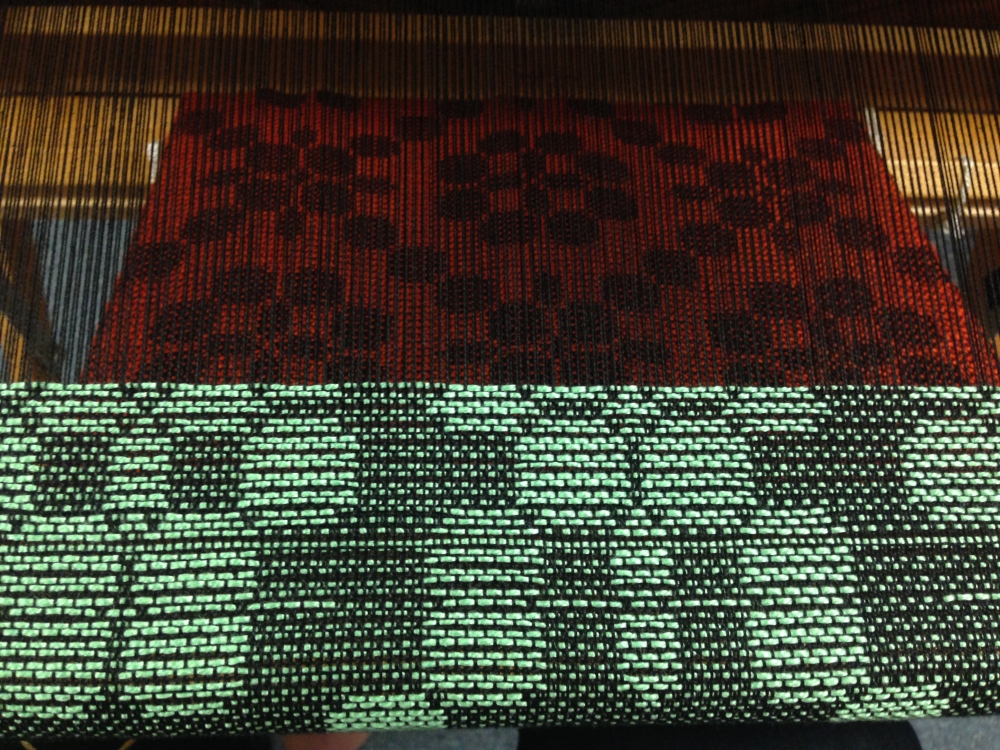
Then
I moved on to this one. Though the pattern looks cool on paper, it was
not one of my favorites. Something about the warp and weft yarn being
such drastically different weights felt not as satisfying to me, and for
some reasons I made more mistakes on this sample than on any others.
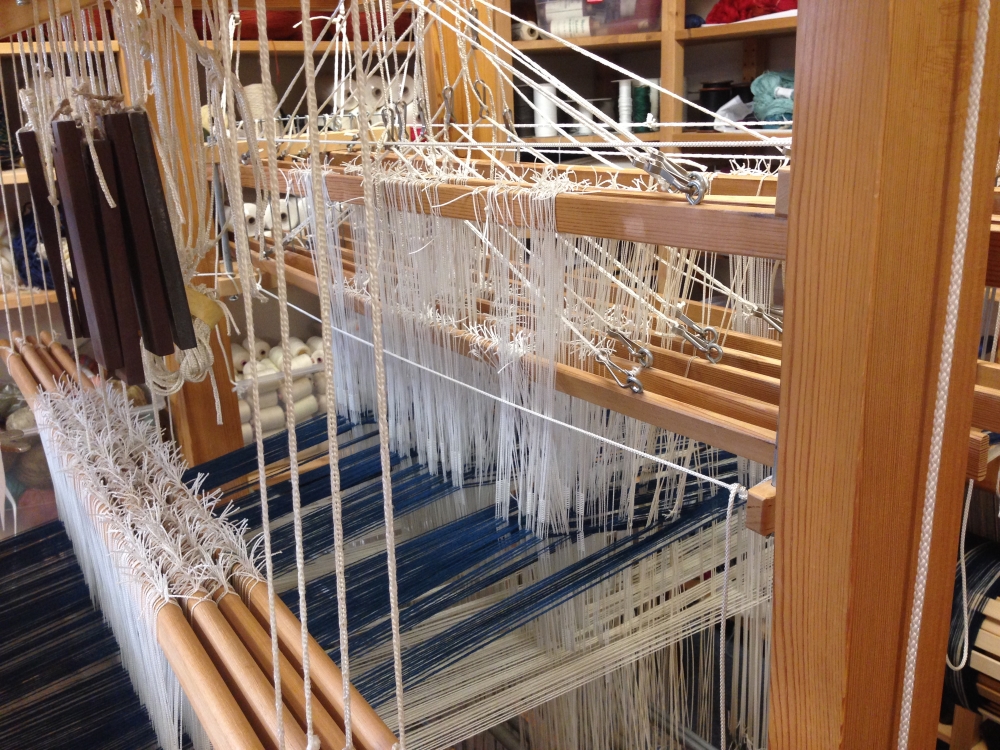
And,
though none of us were working on anything near this intricate or
large, I just love this loom that’s stationed in the back corner of the
room.
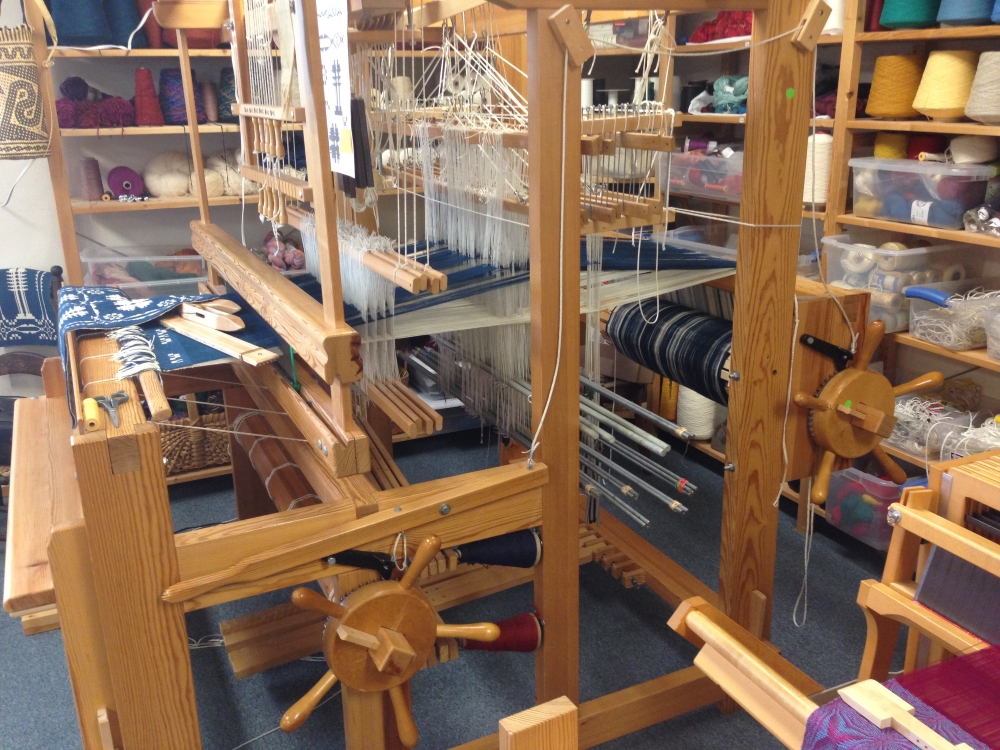
I mean, look at those knobs — they’re like a ship captain’s steering wheel! And this is just a half hour walk from my hotel, and where I’ve been
spending my afternoons, taking notes and brainstorming ideas after a
full day at the studio:




